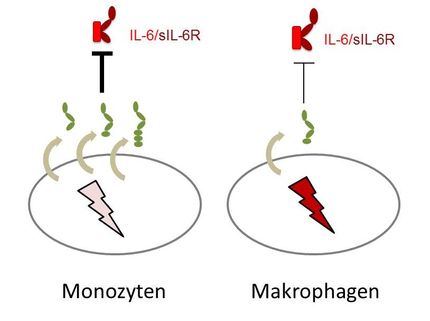MorphoSys and the University of Melbourne File New Patent Applications in MOR103 Program
MorphoSys AG and the University of Melbourne announced an agreement to cooperate on investigating new therapeutic applications for MorphoSys's MOR103 program. MOR103, a HuCAL antibody against human GM-CSF (Granulocyte macrophage-colony stimulating factor), is currently in development for the treatment of rheumatoid arthritis (RA). The collaboration will focus on new therapeutic areas in which GM-CSF has recently been implicated in as-yet unpublished work of researchers at the University of Melbourne. As part of the expanded relationship, new patent applications have been filed, which are intended to broaden the patent position of the anti-GM-CSF approach.
Under the terms of the agreement, MorphoSys will fund research activities at the University of Melbourne in multiple new indications. The University of Melbourne will receive an upfront payment and will be entitled to research funding, clinical milestone and royalty payments. Further financial details were not disclosed.
In 2007, MorphoSys signed an agreement with the University of Melbourne, providing the company with an exclusive license to a patent family covering therapeutic uses of inhibitors of GM-CSF. The claims of the patent are directed to methods of ameliorating the effects of inflammation by administering to a patient an antibody directed against GM-CSF. In November 2008, the U.S. Patent & Trademark Office (USPTO) issued the patent U.S. Patent No. 7,455,836, covering key uses of antibodies against GM-CSF. Human GM-CSF is already implicated in a number of medical conditions.
Other news from the department science

Get the life science industry in your inbox
By submitting this form you agree that LUMITOS AG will send you the newsletter(s) selected above by email. Your data will not be passed on to third parties. Your data will be stored and processed in accordance with our data protection regulations. LUMITOS may contact you by email for the purpose of advertising or market and opinion surveys. You can revoke your consent at any time without giving reasons to LUMITOS AG, Ernst-Augustin-Str. 2, 12489 Berlin, Germany or by e-mail at revoke@lumitos.com with effect for the future. In addition, each email contains a link to unsubscribe from the corresponding newsletter.
More news from our other portals
See the theme worlds for related content
Topic world Antibodies
Antibodies are specialized molecules of our immune system that can specifically recognize and neutralize pathogens or foreign substances. Antibody research in biotech and pharma has recognized this natural defense potential and is working intensively to make it therapeutically useful. From monoclonal antibodies used against cancer or autoimmune diseases to antibody-drug conjugates that specifically transport drugs to disease cells - the possibilities are enormous

Topic world Antibodies
Antibodies are specialized molecules of our immune system that can specifically recognize and neutralize pathogens or foreign substances. Antibody research in biotech and pharma has recognized this natural defense potential and is working intensively to make it therapeutically useful. From monoclonal antibodies used against cancer or autoimmune diseases to antibody-drug conjugates that specifically transport drugs to disease cells - the possibilities are enormous
Last viewed contents
List_of_placoderms
Intermediate_phalanges
Phalanx_bones
Catechol-O-methyl_transferase
Bromocriptine
Publication_of_Darwin's_theory























































